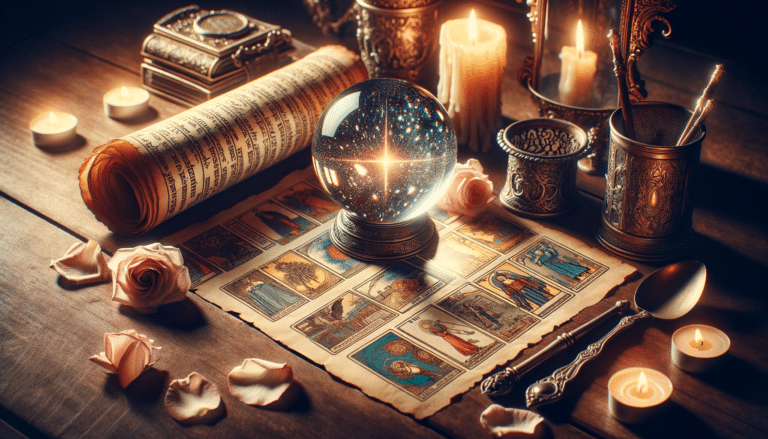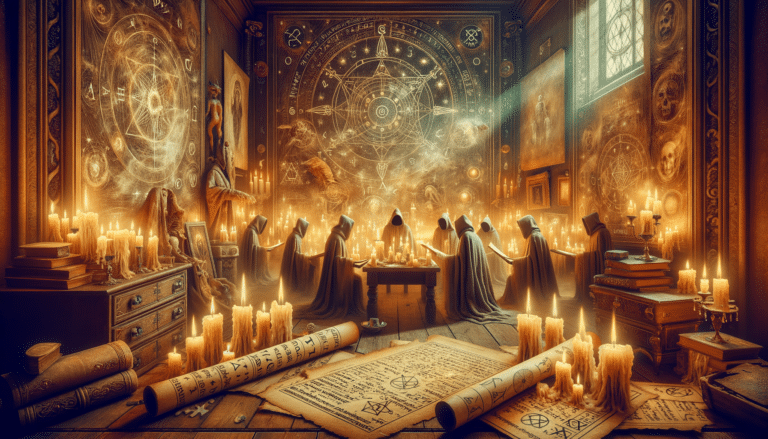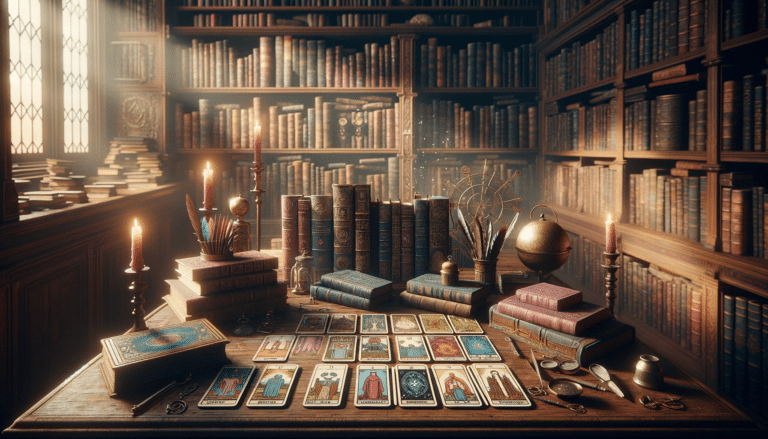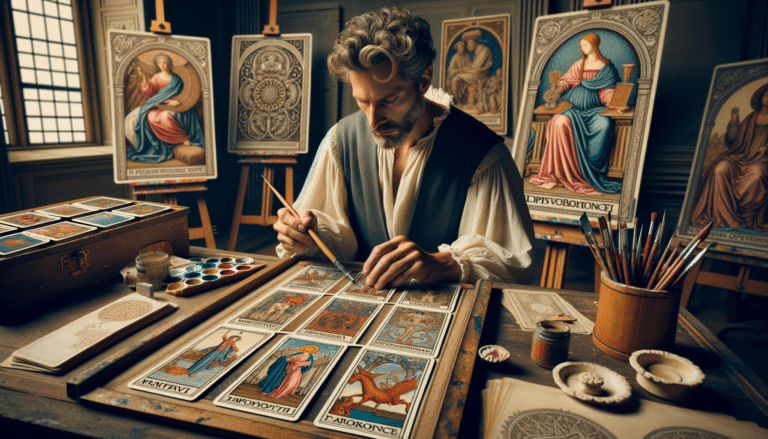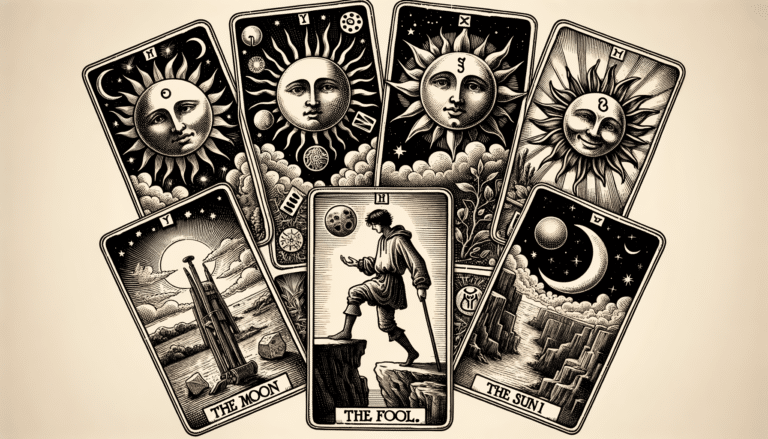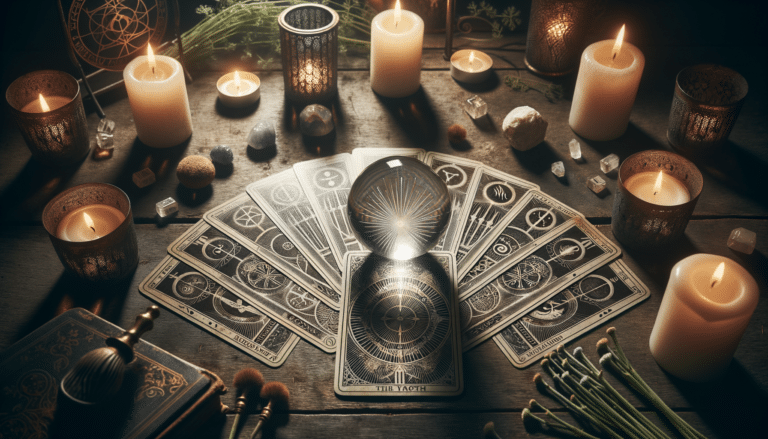Exploring Tarot in Historical Literature and Art: 7 Key Insights
The tarot’s enigmatic symbols have been woven into the narrative fabric since the dawn of printing.
You’re about to embark on a journey through time where you’ll discover a rich tapestry of tarot in historical literature and art.
From the ornate halls of the Renaissance where their origins are traced, to the intricate symbolism found in classic tomes, you’ll see how these mystical cards have influenced storytelling and artistic expression.
You’ll uncover the subtle threads of tarot in medieval artwork, touch upon its esoteric presence in the Victorian era, and witness its enduring impact on modern novels.
Understanding tarot’s historical presence isn’t just about reading the cards; it’s about reading the cultural and artistic cues they’ve left for you to decode.
Key Takeaways
- Tarot’s historical presence in literature and art spans across different eras, reflecting its enduring popularity and influence.
- Tarot symbolism adds depth and meaning to classic literary works, conveying characters’ fates and underlying themes.
- Tarot imagery in medieval artwork reveals the beliefs and values of medieval society.
- The Victorian era saw a fascination with esotericism and the occult, leading to the infusion of tarot symbols in literature and art.
Tarot’s Origins in Renaissance Texts
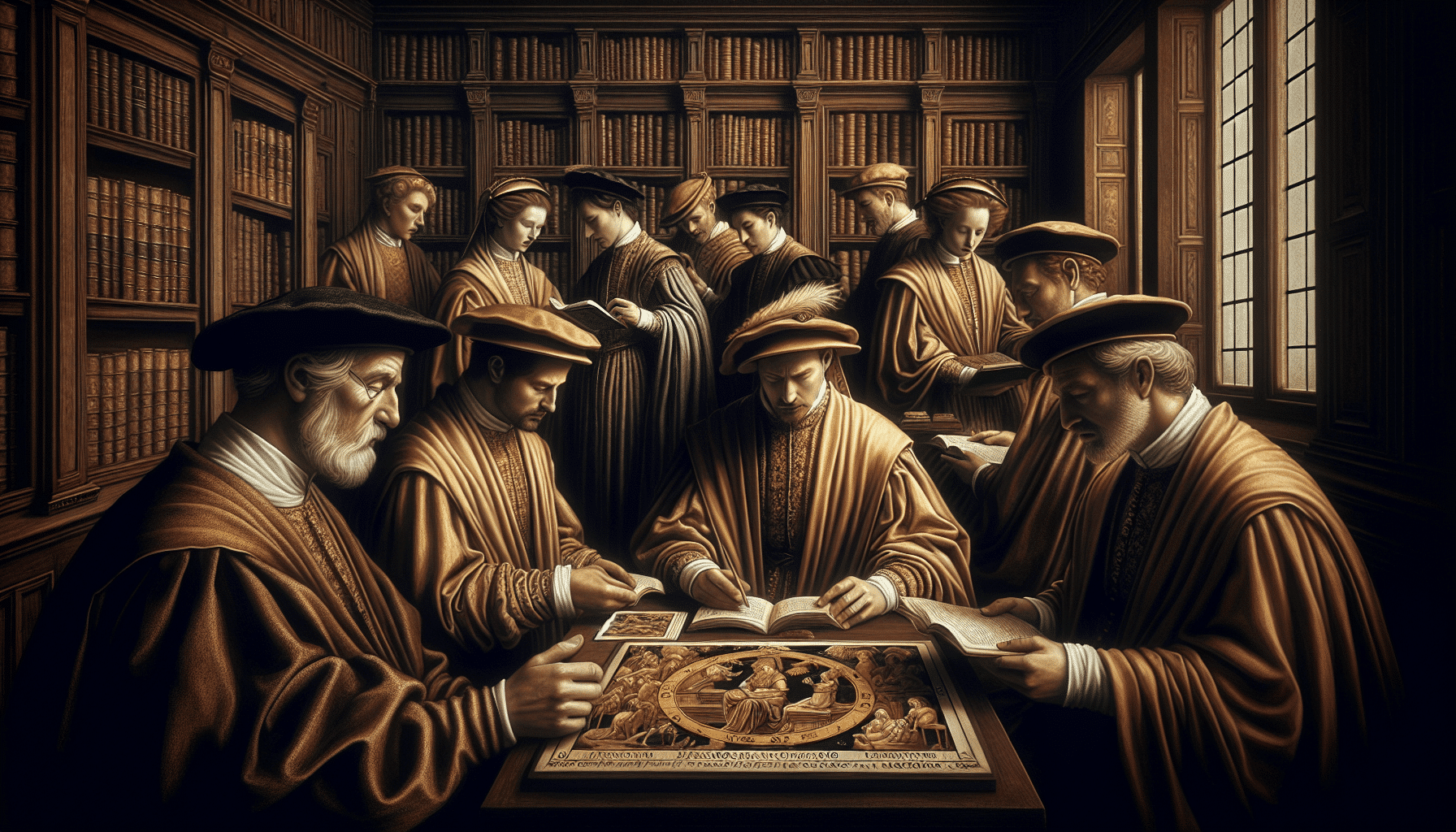
You’ll discover that numerous Renaissance texts contain references to tarot, reflecting its widespread popularity during that era. At this cultural crossroads, the fusion of art, literature, and the emerging humanist thought provided a fertile ground for tarot’s growth. The cards weren’t merely tools for games or divination; they were steeped in the rich tapestry of Renaissance symbolism and philosophy.
Card interpretations from this period often drew upon classical mythology, religious imagery, and the social hierarchy. For example, the Major Arcana cards like The Emperor or The Pope (sometimes called The Hierophant) were direct representations of the contemporary power structures, while The Lovers or The Chariot depicted allegorical scenes that would have resonated with the educated elite of the time.
As you delve into the writings of the Renaissance, you’ll notice that tarot’s presence is indicative of a society deeply intrigued by the interplay of fate and free will. The cards served as a mirror to the world, reflecting societal norms, expectations, and the quest for knowledge. Understanding tarot in this context isn’t just about the foresight it may offer, it’s about appreciating its role at the intersection of art, intellect, and spirituality during a transformative period in history.
Symbolism in Classic Literature

In many classic literary works, you’ll find that tarot symbolism serves as a powerful tool to convey characters’ fates and underlying themes. These elements often weave their way through the narrative, offering a rich tapestry of meaning that you can unravel with a little insight.
Here’s how tarot’s mystique has been historically embedded in literature:
Gothic Archetypes
- The Tower: Symbolizing chaos and upheaval, it mirrors the catastrophic events in gothic novels.
-
The Fool: Often represents the naïve protagonist embarking on a journey filled with eerie experiences.
Allegorical Narratives
- The Death card: Doesn’t always signify physical demise but rather transformation, pivotal in stories of personal growth.
- The Lovers: Showcases the moral crossroads faced by characters, embodying the essence of choice and consequence.
By recognizing these tarot elements, you’ll uncover layers within the classics that might’ve otherwise gone unnoticed. Gothic archetypes and allegorical narratives are enriched with tarot symbolism, adding depth to the exploration of human nature and destiny.
As you delve into the pages of time-worn tales, keep an eye out for these hidden gems that illuminate the journey of characters and the foresight of authors.
Check out our Tarot Decks & Oracle Cards here…
Tarot Imagery in Medieval Artwork
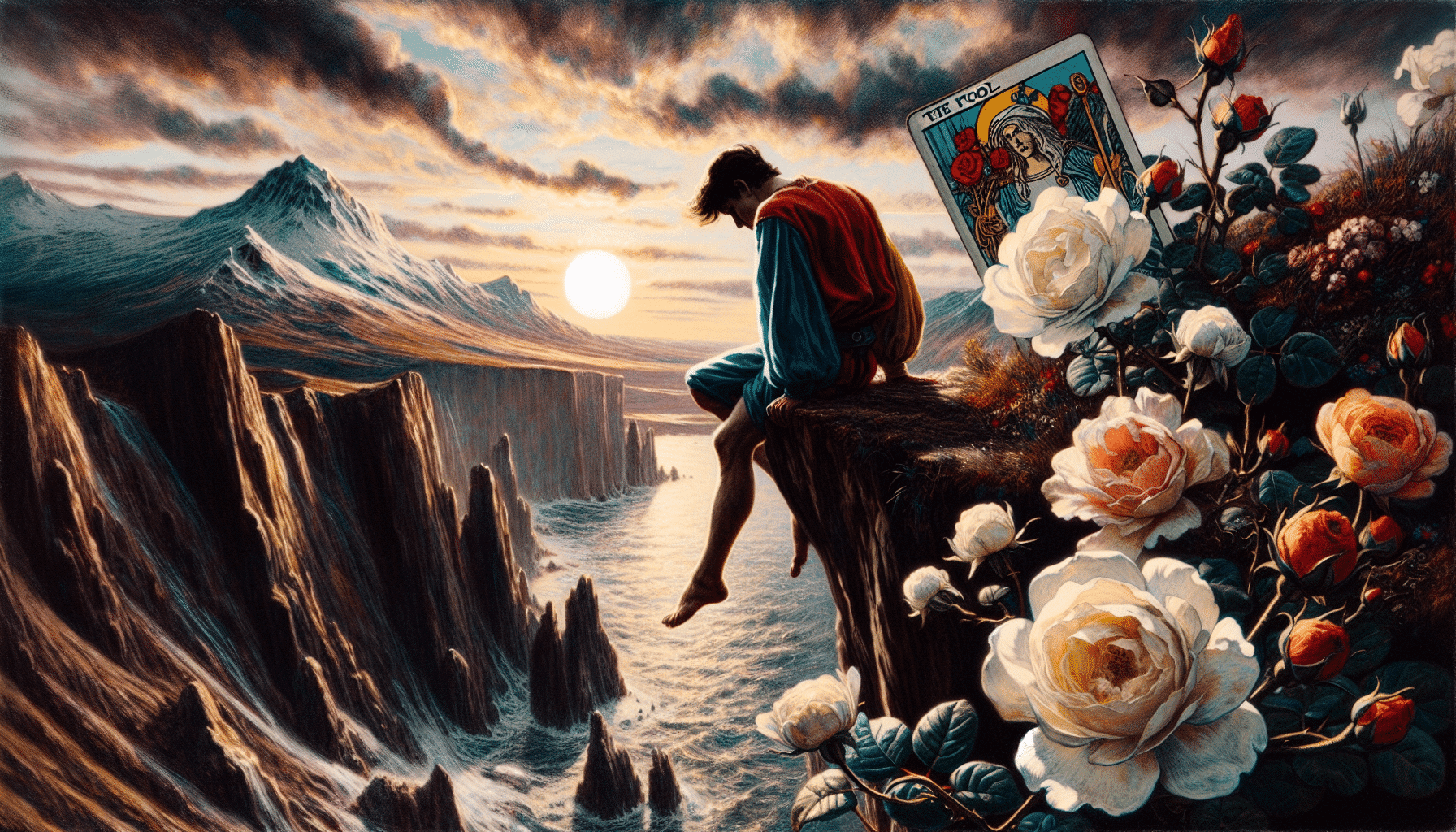
Medieval art’s infusion of tarot imagery offers a window into the era’s cultural psyche, which you can discern in the detailed tapestries and illuminated manuscripts of the time. Imagine walking through a grand hall, the walls adorned with woven stories, where the symbols you recognize from tarot decks reveal the beliefs and values of medieval society.
These visual narratives often carry more than religious connotations; they’re imbued with medieval iconography that echoes the tarot’s archetypes.
| Tarot Archetype | Medieval Art Form | Symbolic / Philosophical Representation |
|---|---|---|
| High Priestess | Stained Glass Windows | Hidden Knowledge |
| The Wheel of Fortune | Vibrant Frescoes | Cyclical Nature |
| Death | Grim Reapers in Margin | Transition, Change |
| The Emperor | Stone Sculptures | Power, Authority |
| The Fool | Jesters in Illumination | Beginnings, Freedom |
You’ll notice that despite Church condemnation of divination practices, the motifs persisted. It’s as if the cards themselves carved a niche into the stone and thread of the age, reflecting the complexity of human experience.
You’re not just looking at art; you’re witnessing a storied tradition that intertwines the mystical with the mundane, offering rich insight into an era where superstition and spirituality were inseparable.
Learn more with these best tarot books here…
Esoteric References in Victorian Era
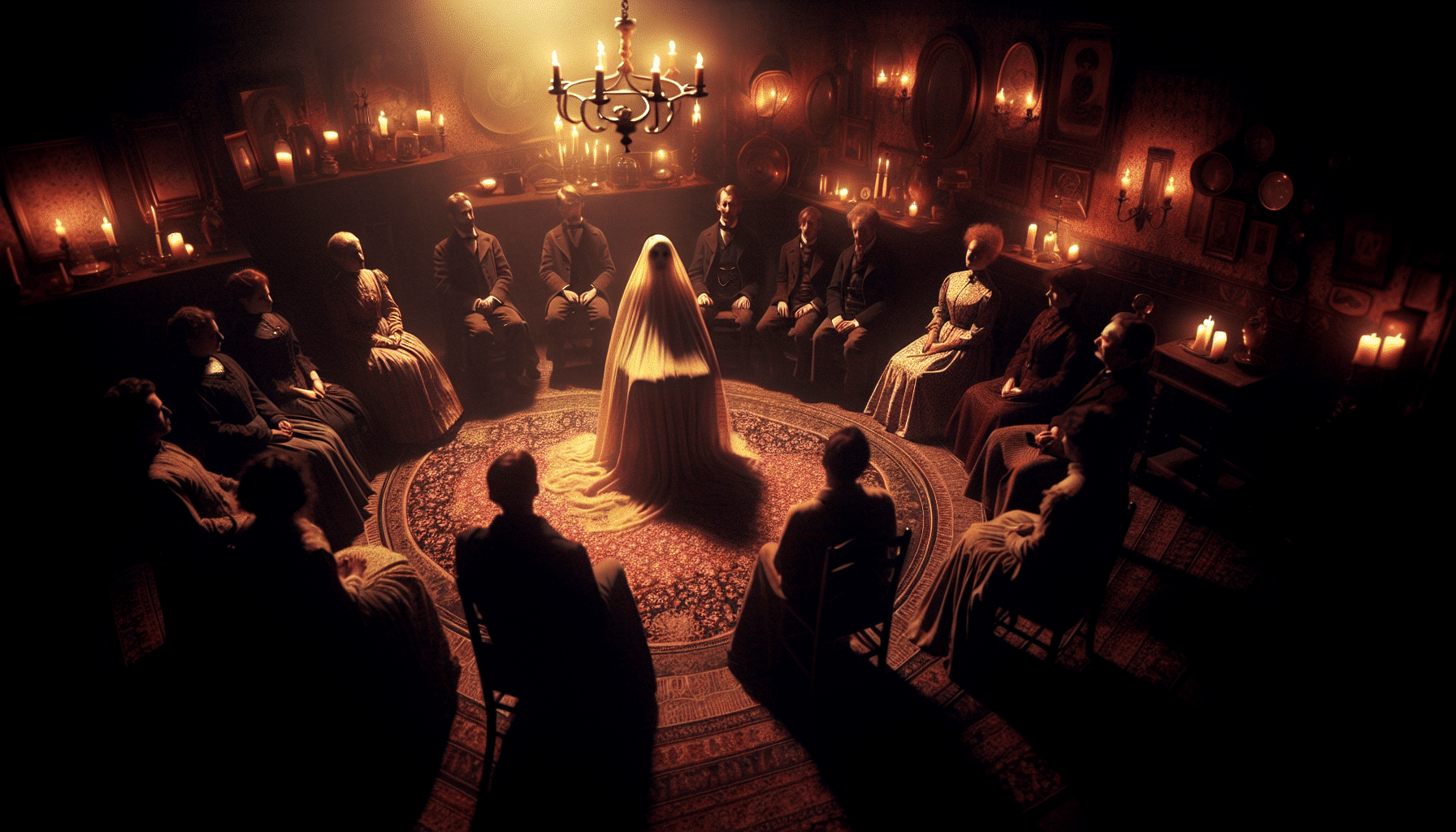
As you delve into the Victorian era, the fascination with esotericism and the occult finds a vivid expression in its literature and art, with tarot symbols becoming increasingly prevalent. Victorian occultism was more than just a passing trend; it was an integral part of the cultural fabric, reflecting a society grappling with rapid change and the unknown.
The Pre-Raphaelite Brotherhood
– Artists like Dante Gabriel Rossetti infused their works with mystical themes and tarot imagery.
– Paintings often featured women as priestesses or sibyls, hinting at the High Priestess tarot card.
Gothic novels
– Writers like Bram Stoker and Mary Shelley used tarot motifs to hint at fate and the supernatural.
– Characters often encountered situations that mirrored the journey of the tarot’s Fool, symbolizing innocence and beginnings.
You’ll find that tarot’s arcane symbols served to underscore the era’s preoccupation with the unseen and the mystical. Gothic novels, with their dark and foreboding atmospheres, often included tarot references to evoke a sense of destiny and otherworldliness.
Understanding this era’s artistic output means recognizing how deeply intertwined tarot and Victorian occultism were. They offered a lens through which to explore the era’s complex psyche, where the mystical was never far from the surface.
Learn even more secrets of history of tarot cards here…
Tarot Influence on Modern Novels
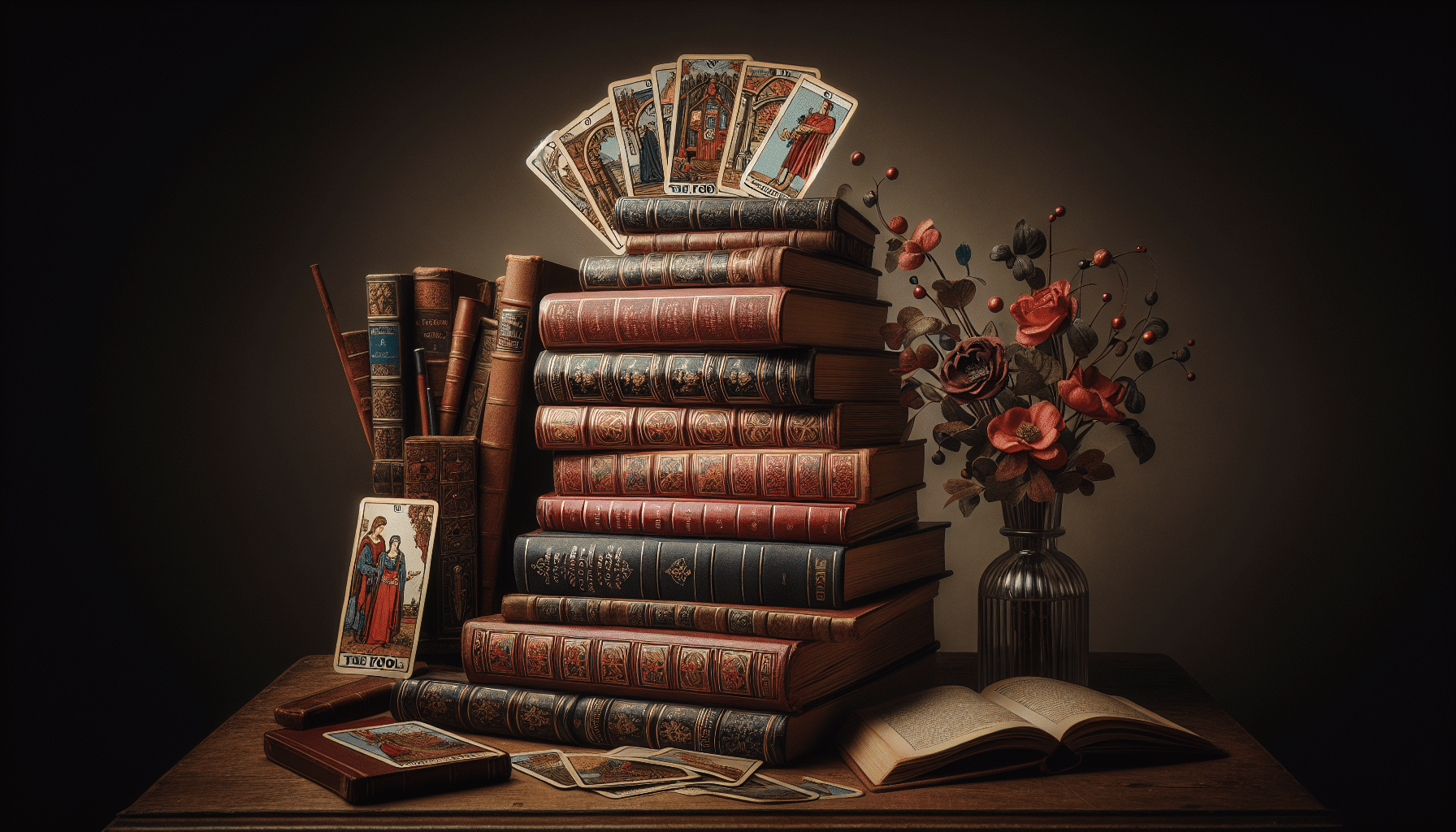
You’ll notice contemporary authors often weave tarot motifs into their narratives, grounding their stories in a rich tradition of symbolism and mystique. These mystical archetypes serve as a powerful narrative device, adding layers of meaning that resonate with readers on a subconscious level. The tarot deck, with its intricate web of symbols, lends itself to a versatile range of literary uses, from character development to foreshadowing plot twists.
Now, let’s look at how modern novels incorporate tarot imagery:
| Novel | Use of Tarot |
|---|---|
| “The Night Circus” by Erin Morgenstern | Characters perform tarot readings, reflecting inner journeys and hinting at future events. |
| “The Book of Speculation” by Erika Swyler | Tarot cards drive the narrative, revealing family secrets and curses. |
| “The Raven’s Prophecy Tarot” by Maggie Stiefvater | The author created a bespoke tarot deck that intertwines with the thematic elements of her series. |
| “Fool’s Fate” by Robin Hobb | Tarot-inspired Skill cards play a critical role in the protagonist’s quest and decision-making. |
These novels show how tarot cards are not just tools for divination but are also woven into the fabric of storytelling, offering readers a glimpse into the characters’ psyches and the universe’s greater truths.
Conclusion
As you’ve journeyed through the tapestry of time, you’ve seen how tarot’s enigmatic allure has woven its way into the fabric of our cultural narrative. It’s more than a deck of cards – it’s a mirror reflecting our collective psyche in literature and art.
So, keep your eyes peeled; tarot’s story is far from over. Like the Fool’s infinite path, it promises to draw us into ever-new chapters of human expression, shuffling through history’s pages with mystical aplomb.

About The Author – Allen Hill
Allen Hill, the force behind Unknown Truth Tarot, has a YouTube following 6-times bigger than the population of his hometown, Miamisburg, Ohio. From his spiritually rich blog on Tarot and crystals to his role as CEO of The Unknown Truth Tarot Metaphysical Shop, Allen’s passion for the metaphysical shines through.
A master Tarot reader and “crystal junkie,” Allen is also a devoted dad to Dylan, 10, and Destiny, 24. When he’s not immersed in the world of Tarot and crystals, he enjoys poker and video gaming sessions, often humorously outplayed by Dylan.
Follow Allen on Twitter, Instagram, Facebook, TikTok, and subscribe to his Unknown Truth Tarot YouTube channel to join him on a journey of spiritual growth and self-discovery.

